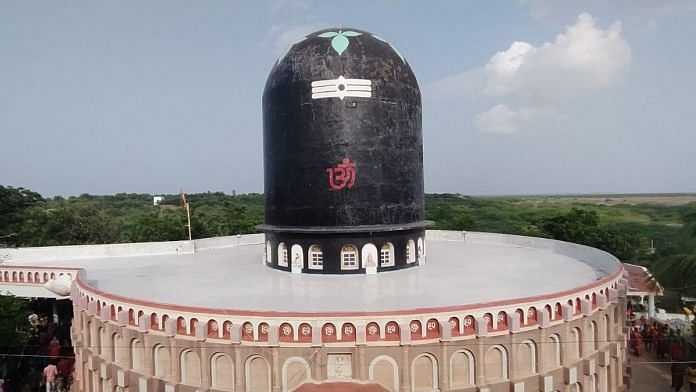New Delhi: Why would a maritime archaeologist research gods and goddesses? Simple answer: ‘Benefits.’
“In India, we have a tradition. Something through which we are benefiting, we worship them,” Dr Anirudh S Gaur, professor at CSIR-National Institute of Oceanography, said while speaking about the antiquity of worshipping Sikotar Mata in Gujarat, the tribal god Vahanvati worshipped as another form of goddess Parvati and the subject of his recent lecture organised by the Indian International Centre.
There has always been a close link between travellers and worship.
As Gaur spoke about the mythological findings from his years of maritime archaeological expeditions along the Saurashtra coastline of the Western Ghats, a common theme of hinterland Indian culture of worship and local deities ran across the story.
The coastline holds a history of trade, which dates back hundreds of years. And trade has always been associated with the idea of the urgent need for protection in Indian culture. When ancient traders left their houses, their families worshiped deities to ensure that the men return safely and triumphantly. And there were deities that the traders and fishermen of the Western coast, especially those of Gujarat, Maharashtra, and Goa, worshipped for safety and good luck. Gaur referred to it as the cultural background of his findings.
Also read: A lawyer and a tea seller revive Kanchi’s 8th century temple
Deities of India’s coastlines
Among them is the story of a very peculiar deity. At Maharashtra’s Dabhol jetty, there is a temple called Loteshwar where, inside the sanctum sanctorum, an anchor from the British admiralty is worshiped as a form of Lord Shiva, fashioned with flowers and red sindoor. With a history of 700-800 years of functioning as a major old-time trade port to a minor port now, Dabhol jetty is frequented by fishermen who worship the deity before leaving for the sea, seeking protection and success in their catch of the day.
Gaur goes on a memory trip as he showcases his research findings from the excavations at Dwarka and Bet Dwarka of Gujarat. His excavations mainly focus on anchors—from ancient Harappan anchors at Mithi Viradi to medieval ports of the now Rann of Kutch. Through the excavations, the professor also understood snippets from the rich culture of knowledge in ancient Hindu literature.
“In one of the talukas of Goa called Saptari, we found 13 idols of goddesses along the banks of the Mandovi river,” Gaur said. “These goddesses have very peculiar boat motifs attached to them…sitting on the pedestal one foot is on the boat. Two of them are still being worshiped.”
When it comes to the realm of local goddesses, India has a culture of celebrating deities of nature and land, born out of the geology and etymology of the atmosphere they are living in. Sikotar Mata is one of them. Gaur also mentioned the Sangodd festival of Goa, where deities are placed over boats lined up— much like how the excavated stone idols of Sikotar Mata, where the goddess is seated on a boat or has kept one of her legs on a boat, looked like.
Sikotar Mata, according to Gaur, originates from an island name where the traders of the Saurashtra coast went and when they had a good profit they gave offerings to the deity and thus her origin. “We find the word “Sri Sikotara”, Gaur passionately explains, “in 17th century Gujarati cave inscriptions.” Sikotar Mata is still worshipped, under different names, in various temples across Gujarat, some of the most prominent being at Ralej near Khambat, Dholera, and Dahej.
When Gaur and his team go for research, they contact local school teachers, especially those who teach history. One such teacher in Mithi Viradi told him about a place called Bhim ka Khatiya (Bhim’s bed). “At first, I was reluctant because these types of tales you hear everywhere and when you reach there is nothing,” Gaur recalled.
On reaching the place, the professor and his team saw four huge anchors weighing more than 5 tonnes. They were similar to his interpretations of anchors. “ The local interpretation was that the anchors were four legs of the cot of Bhim from Mahabharata,” he said.
(Edited by Ratan Priya)



